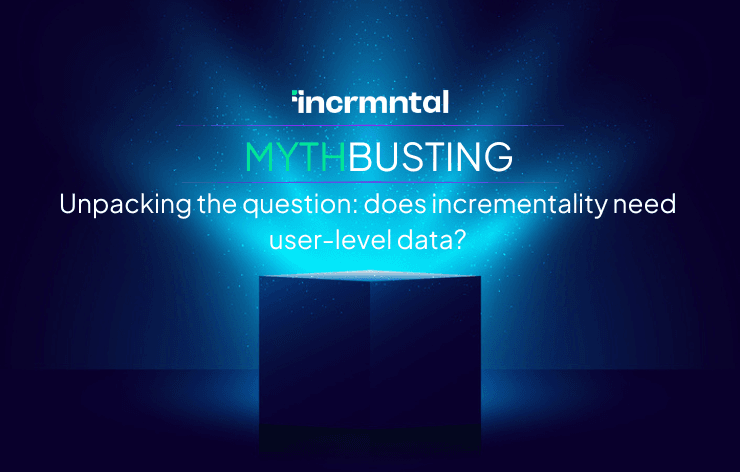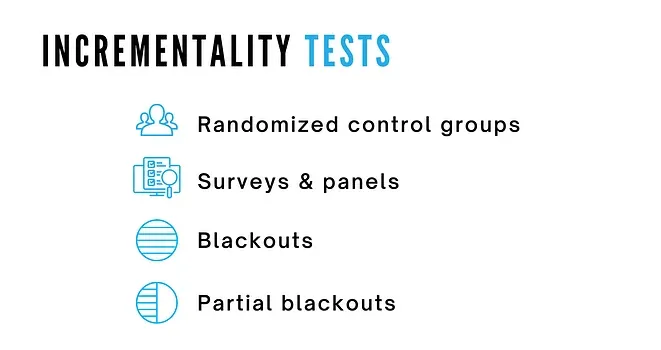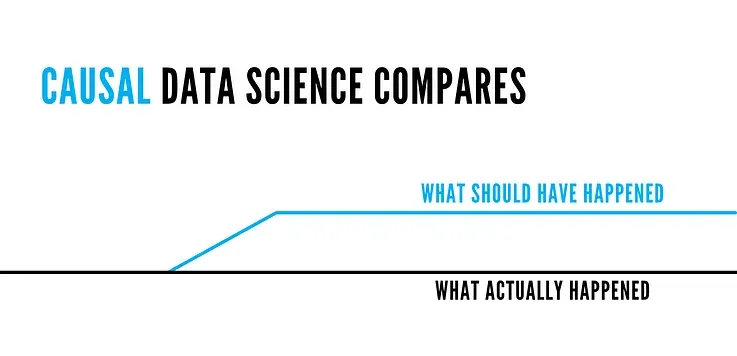Solutions
Teams
Built for your whole team.
Industries
Trusted by all verticals.
Mediums
Measure any type of ad spend
Platform
Use Cases
Many Possibilities. One Platform.
AI and Automation
The Always-on Incrementality Platform
Teams
Built for your whole team.
Industries
Trusted by all verticals.
Mediums
Measure any type of ad spend
Use Cases
Many Possibilities. One Platform.
AI and Automation
The Always-on Incrementality Platform

This is the first in INCRMNTAL’s mythbusting series, where we are tackling the top myths and misconceptions around incrementality. After countless conversations with clients and those new to the world of incrementality, we’ve taken note of the most misunderstood areas and are clearing these up, one by one. The first myth we’re clearing up in the series? Whether or not incrementality needs user-level data.
Earlier this year, as the Digital Services Act came into force, online marketers were once again reminded that regulators will keep on moving toward stricter user privacy and protection. With user privacy becoming increasingly regulated, online advertisers and marketers are more conscious of whether the measurement methods they are investing in are future-proof. For those looking to incrementality as the way to truly measure their marketing efforts, the question of “Does incrementality attribution need user-level data?” becomes an important one.
In short: no. Incrementality does not require user-level data.
But, to better understand why not and how it works without relying on user-level data, we need to first consider what incrementality and user-level data are, and how incrementality measurement works.
Incrementality measurement is a multifaceted form of measurement that evaluates the value of advertising or marketing efforts. Rather than relying on one attribute, incrementality considers and tests multiple factors, measuring the true value of your marketing efforts.
In other words, incrementality looks at all your marketing activities to see which of these is the most impactful. Incrementality measurement allows marketers to measure, and optimize marketing in a privacy-safe ecosystem.
User-level data is the raw data derived from digital actions, content, or information created or owned by a single user. In the world of marketing measurement, this can be anything from clicks, re-engagements, conversions, user events, and more.
What this means, is that user-level data reflects tracking, rather than a form of measurement.

Solely focusing on user-level data shows a journey that could mean ignoring a myriad of other information that could better reflect the success of your campaigns. And as user privacy policies become more stringent, measurements that look beyond the user-level are becoming more and more important.
Incrementality measurement is one of them. What incrementality measures is the impact of marketing activities, not clicks derived from one data set only.
There are several processes for incrementality measurement that do not rely on user-level data, as it uses a statistical approach. These will be familiar to any marketer who has conducted A/B testing on their campaigns. Some of these include:

There are some disadvantages to these tests. For the majority, in order to carry them out, they require a campaign to be paused. This can be costly and time-consuming for the advertiser. Additionally, even after conducting these tests, there is the possibility that results are inconclusive, yielding more questions than answers.
There is a method of continuous incrementality measurement that does not require pausing campaigns or waiting months for potentially inconclusive data. This method of incrementality measurement uses Causal Data Science.
What is Causal Data Science? Using machine learning and AI, causal data science can evaluate and measure the incremental value of marketing activities being carried out. Here’s how Causal data science works:

Compared to other forms of incrementality testing, causal inference requires no changes on the marketer's part. Other incrementality testing methods often require the marketer to take specific action for the test's benefit, such as splitting audiences, disabling advertising, paying companies to do surveys, or paying media suppliers to serve PSA commercials.
New challenges can also provide new opportunities. There are ways to meaningfully measure advertising and marketing efforts, without relying on user-level data. Incrementality measurement is one way to measure marketing activities that truly reflects their value through a statistical approach.
INCRMNTAL is an incrementality testing platform that uses machine learning and AI to provide incrementality and cannibalization insights to Advertisers, unlocking the full value of their marketing budget. Still have some burning questions or doubts on incrementality? Let us know, as we continue debunking incrementality myths and misconceptions over on INCRMNTAL’s blog.

Maor is the CEO & Co-Founder at INCRMNTAL. With over 20 years of experience in the adtech and marketing technology space, Maor is well known as a thought leader in the areas of marketing measurement. Previously acting as Managing Director International at inneractive (acquired by Fyber), and as CEO at Applift (acquired by MGI/Verve Group)